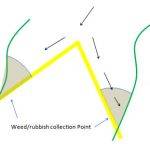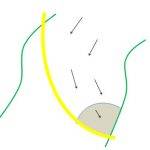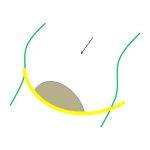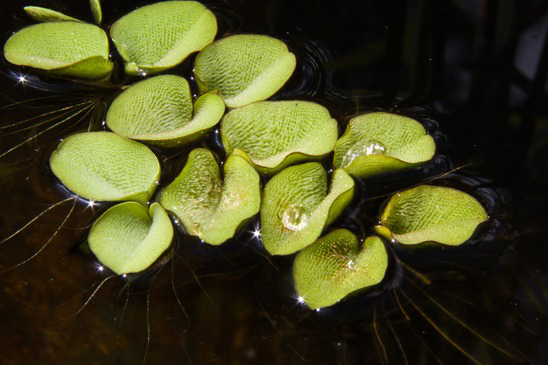Aquatic greenery is great, but not when it comes in the form of a populous weed known as Salvinia. Salvinia is not just a problem that affects the coastal regions of Australia. The infectious weed has spread worldwide, becoming a global problem. Salvinia flourishes in fresh-water that is warm and slow moving. In addition, the nutrient levels of the water do not need to be particularly high for Salvinia to survive and populate.
Once Salvinia begins to reproduce, controlling the weed becomes highly problematic. In ideal conditions, the plants can double their mass in just two days. Rather than allow Salvinia to devastate the aquatic environment, there are a number of methods that you can use to manage this weed. Below are the most common and effective methods for controlling Salvinia and other aquatic weed populations.
Manipulate the Water Level
For a Salvinia and other weeds that are in an enclosed body of water, one of the best approaches is to manipulate the water level. This approach can be used alone or in conjunction with other methods. In order to survive, Salvinia and other weeds require a certain water level to be present. Therefore, if you control the water level and reduce it to a point that is unconducive to the plant’s survival, then the plant will eventually begin to wilt and perish.
Water level reduction should be used carefully. When you lower the water level, you want to lower it to the point where Salvinia will dry out and die. If regrowth does occur, you’ll need to use this type of treatment again. When you lower water levels, also take care not to expose the sediment and aquatic plants within the enclosed body of water. This can damage the aquatic plants living in the habitat.
For those that do choose to manipulate water levels, there are a number of advantages. Manipulating water levels is an economical solution to controlling Salvinia and other weeds, native aquatic plants have increased chances of survival and growth, and floating sediments can settle more easily.
Weed and Debris Booms
The next highly effective option to controlling Salvinia and other aquatic weeds is to utilize a Weed and Debris containment boom. Weed and Debris booms are structures that are able to contain rubbish and aquatic weeds within waterways. These structures are designed and built with high-quality and durable materials that are able to withstand crumble and disintegration over a long period of time. In addition, these structures also contain a skirt that is made from a UV horticulture weaved cloth that is stabilized to promote larger pore size. The larger pore size is highly effective on aquatic weeds and other rubbish that floats through the water.
When it comes to Salvinia and other aquatic weeds, Weed and Debris booms are extremely effective in areas like SE Queensland. The containment device does an extremely good job at catching the weed and stifling its growth. Should you choose to incorporate this method into your toolbox for the management of Salvinia and other weeds, you’ll notice that the installation process is very straightforward. There are three installation types. The Weed and Debris boom can be installed as a Reverse V, a One Way Slice, or by utilizing the Conventional method.

Reverse V
The Reverse V is for a small to large scale deployment to manage the rubbish and weeds. The Reverse V will direct rubbish to the banks of the catchment areas. This divides up the flow of velocity and it also reduces the need for other control methods like pesticides and harvesting.

One Way Slice
The One Way Slice is the second installation option. It utilizes two main anchor points on land and more throughout the length of the boom. This type of method helps collection and it prevents any need to get in the water. The One Way Slice directs the weeds and debris towards one side of the bank. It is most effective in slow-moving water.

Conventional Method
The final option is the Conventional method. Unlike the two options above, the Conventional method requires that weed to be harvested from the water. Two land points are used to set up the boom and the weeds and other debris are collected within the water. This option is advantageous because it is reliable, the load is distributed, and there is a high scalability. Regardless of which option you choose, each is an ideal method to control Salvinia and other populous weeds.
Herbicide
The final option for controlling a Salvinia and other weeds is to utilize herbicide. An herbicide is perhaps the trickiest option because it requires a great deal of care. If you choose to use herbicide, you must have easy access to the areas where the weeds are growing. When you use herbicide, you’ll need to pair it with a surfactant, which acts as a wetting agent that creates tension between two liquids. In addition to easy access, herbicide also requires that you spray the area regularly using equipment like a high-pressure water sprayer. The general application of herbicide is around three times over a period of a few weeks. While herbicide can be an effective option, keep in mind that it can be very costly, somewhat dangerous, and inconvenient. Not all herbicides are potent for Salvinia and all of the other weed types that you have in the waterway.
Summary
Salvinia and other weeds pose a great risk to the aquatic plants in Australia and worldwide. Control methods are necessary to contain this infectious weed. While each method differs, there are certainly options that are more effective than others. For example, managing the water levels or using an herbicide requires a bit more attention, funds, and oversight than the boom method. Out of all three methods, the boom method is perhaps the most effective, least costly, and it is the easiest to implement. Booms can easily capture the weeds through the water flow, meaning that the work you put in is pretty minimal.


